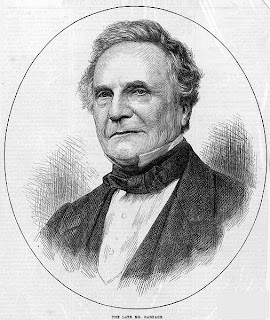Charles Babbage
Charles Babbage, (26 December 1791 – 18 October 1871) was an English mathematician, philosopher, inventor, and mechanical engineer who originated the concept of a programmable computer. Parts of his uncompleted mechanisms are on display in the London Science Museum. In 1991, a perfectly functioning difference engine was constructed from Babbage's original plans. Built to tolerances achievable in the 19th century, the success of the finished engine indicated that Babbage's machine would have worked. Nine years later, the Science Museum completed the printer Babbage had designed for the difference engine, an astonishingly complex device for the 19th century. Considered a "father of the computer", Babbage is credited with inventing the first mechanical computer that eventually led to more complex designs.
Design of computers
Babbage sought a method by which mathematical tables could be calculated mechanically, removing the high rate of human error. Two different factors seem to have influenced him: his experience working on logarithmic tables and existing work on calculating machines carried out by Blaise Pascal, and Gottfried Leibniz. He first discussed the principles of a calculating engine in a letter to Sir Humphry Davy in 1822.
Babbage's machines were among the first mechanical computers, He directed the building of some steam-powered machines that achieved some success, suggesting that calculations could be mechanised.. The data and program memory were separated, operation was instruction based, the control unit could make conditional jumps and the machine had a separate I/O unit.
Difference engine
In Babbage’s time, numerical tables were calculated by humans who were called ‘computers’, meaning "one who computes", much as a conductor is "one who conducts". He began in 1822 with what he called the difference engine, made to compute values of polynomial functions. Unlike similar efforts of the time, Babbage's difference engine was created to calculate a series of values automatically. By using the method of finite differences, it was possible to avoid the need for multiplication and division.
At the beginning of the 1820s, Babbage worked on a prototype of his first difference engine. Some parts of this prototype still survive in the Museum of the history of science in Oxford. This prototype evolved into the "first difference engine”. This first difference engine would have been composed of around 25,000 parts, weighed fifteen tons (13,600 kg), and been 8 ft (2.4 m) tall.



